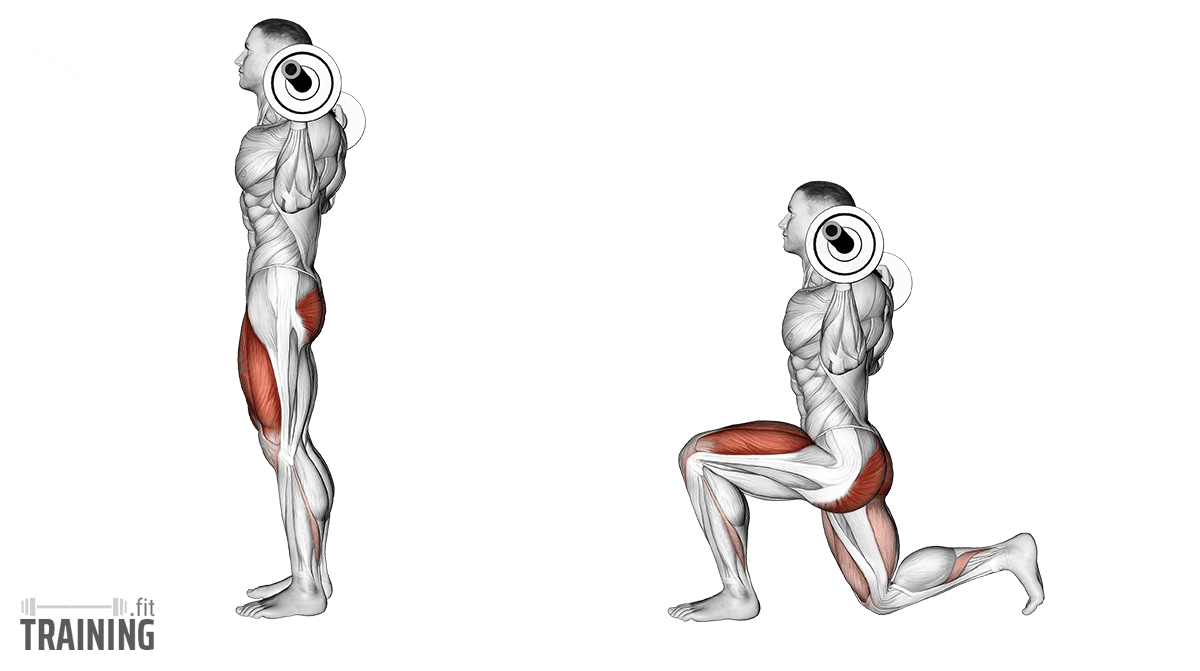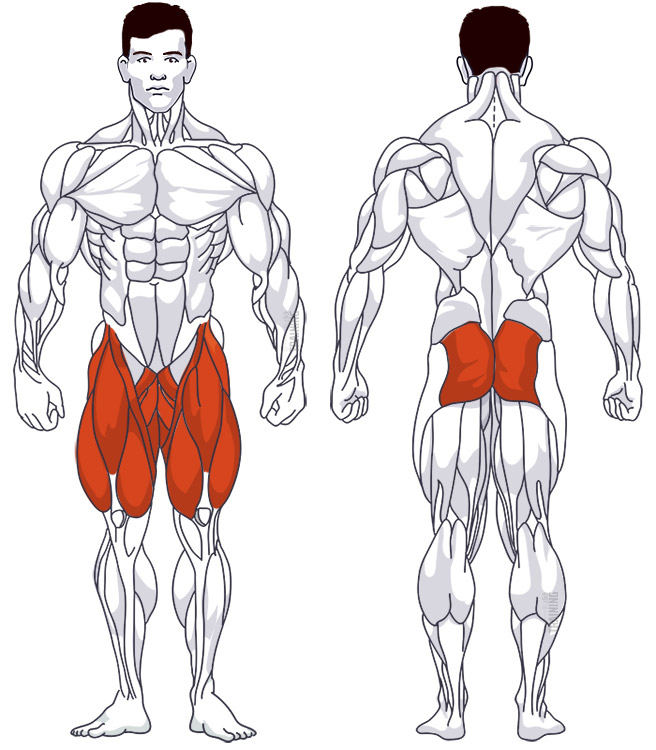Barbell Lunges
Isolation exercise, Free weightsOverview

Main muscles
- Thigh: Quadriceps
(Musculus quadriceps femoris) - Buttocks: Large gluteus maximus
(Musculus gluteus maximus)
Training plans
Barbell Lunges is a suitable substitute for similar exercises in or as a supplement to various training plans.
Barbell Lunges: Basics and alternatives

Involved main muscle groups:
Barbell Lunges
The barbell lunge is a great alternative to the classic lunge without equipment and the dumbbell lunge. With this exercise, you add the extra weight of a barbell on your shoulders, providing an even greater challenge for your hamstrings as you step forward.
This variation is often seen in the gym for strength training, as it’s more convenient to increase the weight with a barbell than with dumbbells.
The muscle groups targeted are the same as with the other two forms. With the barbell lunge, you mainly train your quadriceps (front thigh) and gluteus maximus (butt).
Before attempting the barbell lunge, try the exercise without equipment or with dumbbells. This helps you establish balance and ensures you can perform the exercise properly with heavier weights later on.
Correct execution
Besides the barbell, you’ll need some space to step forward. A bigger step engages your glutes more, while a smaller step focuses on your front thigh.
The added weight on your shoulders means you’ll need to stabilize your upper body more than with the other variations. This helps strengthen not only your legs and butt, but also your core, including your stomach and back.
Start with the barbell in the rack, set slightly below shoulder height. To protect your neck, wrap a towel around the bar or use a neck pad.
Video tutorial
Step-by-step instructions
Stand in front of the barbell rack. Duck under the barbell, positioning it on your shoulders. Grip the bar firmly with both hands. Stand up, lifting the barbell out of the rack.
Step away from the rack, feet hip-width apart. Keep your hands on the bar throughout the exercise.
Take a big step forward with both feet pointing straight. Plant your front foot firmly, and balance on your back toes. Your back leg stabilizes your body while your front leg bears the weight.
Lower your torso straight down. Keep your front knee behind your toes. Aim for a 90-degree angle between your upper and lower legs. Your back knee should hover just above the floor.
Push off the ground with your front leg, explosively but controlled. Maintain stability during the movement. If you struggle, use less weight.
Either continue with the same leg, switching at the end, or alternate legs with each rep. Return the barbell to the rack when finished.
Common mistakes
Make sure the barbell is centered on your shoulders for even weight distribution and to avoid straining your core. Don’t use too much weight, as it can affect your balance. Again, practice lunges without a barbell first.
Keep your upper body upright throughout the exercise. Poor form can cause discomfort and compromise stability.
Even if you’re a lunge pro, use a mirror to check your form during the barbell version.
Your step length shouldn’t be too long or too short. Ensure your front knee doesn’t extend past your toes as you lower, and your back knee doesn’t touch the floor. Never rest your knee on the ground, as it reduces the training effect and is harmful to your knee joint.